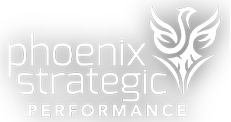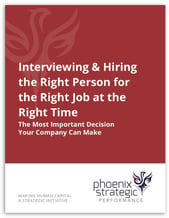Does your organization have a structure that has both a hierarchy and a matrix structure? To clarify:
- Hierarchy - A hierarchy structure is the traditional organizational structure broken down into functions. A manager heads up the function with employees reporting to the manager. It is depicted in the typical organization chart format.
- Matrix - A matrix structure is a fluid 'structure' typically described by the following statement: "This is the org chart, but here is how the organization really works." It is depicted by an 'organigram’©, a spaghetti chart of interlinked solid and dotted lines. The solid lines represent the traditional organization chart. The dotted lines represent the fluid matrix interactions.
If your answer to the above question is yes, you are like many other organizations. As the nature of work has changed over the years, the matrix organization has evolved to become today's new normal. In a matrix organization, your people must be responsive to a functional boss, accountable, and responsive to the many others in the matrix with whom they are linked, represented by the organigram's dotted lines.
In the matrix organization, the rules of engagement are gray and cloudy, and the skills needed are both knowledge skills and, just as importantly, soft skills. In the matrix organization, getting the work done looks effortless when things are working correctly. However, effortless takes a lot of effort. But when things go wrong in the matrix, they go very wrong. To make the matrix work effortlessly, employees need to know what is expected of them and the skills they need to make the matrix work.
The Matrix Skills – The Rules of Engagement
1. Understanding of Oral, Written, and Face-to-Face Communication and the knowledge to know when to use them and when not to
Example: Email makes communication easy. But does it make it better? Are there times when face-to-face communication is much more powerful and effective than email? Is there a time when a phone call is more effective than an email? Does the written email have the right tone?
2. Understanding the Personality of the People with Whom You Are Interacting
Knowledge of the 'Platinum Rule' is critical to establishing effective and efficient working relationships. Do unto others as they want to be done unto! Attempt to understand your colleagues deeply and treat each one as an individual. Step out of yourself and consider what is important to the other person. Then, modify and adapt. One size does not fit all.
3. Collaboration and the Art of Effectively Getting Things Done With and Through Others
We are now living in the third work revolution, the Collaborative Revolution, which is why the matrix organization has evolved. Work can no longer be done in an isolated bubble but in a bowl of spaghetti.
4. The Thinking Skills: Problem Identification, Problem-Solving, and Critical Thinking – The Higher-Level Skills
AI, automation, or robotics are quickly replacing former lower-level work. The remaining work requires a higher-level skill set that used to reside much higher up in the organization. Now, everyone is expected to think critically about their role. In a continuous improvement environment, employees are also expected to think about better ways to do their jobs and impact the bottom line. I often hear executive leadership say that they just want people who can think!
5. Accountability and Responsiveness: The Basis for Trust and Respect in the Organization
If the nature of work today is interrelated, then the basis of the effortless organization is individual accountability and responsiveness. Do what you say you will do and deliver the job when you say you will. Continual, consistent, and reliable communication will always keep the right people in the loop. Understand how your work and interactions impact colleagues both upstream and downstream. Demonstrate that you understand how the organization works, how you fit into it, and the impact of your actions on others.
Trust and respect are the basis for making the matrix organizational structure work. Trust and respect are earned from colleague daily with every action we make or don't make. Earning and keeping trust and respect is an intentional thought process accompanied by specific actions. The effortless matrix organization doesn't 'just happen.' Each individual has to make it happen.
What critical organizational issues should you consider as you optimize the process of managing human capital? Download our Human Capital Checklist, which highlights your organization's critical issues to evaluate regularly. You can also schedule a complimentary assessment with a member of our team.





